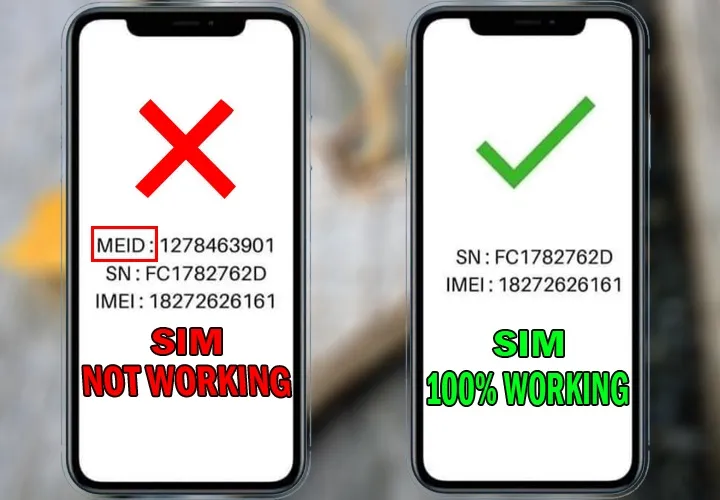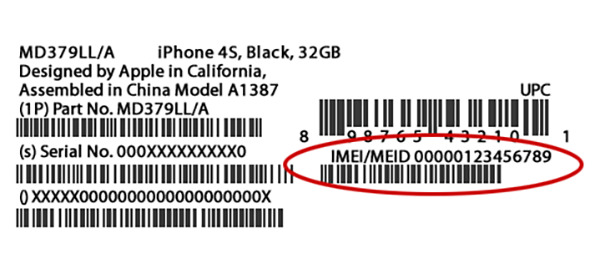In the realm of mobile technology, a myriad of acronyms and technical terms can leave users scratching their heads. This exclusive article delves into one such term: the MEID (Mobile Equipment Identifier). We’ll explore its purpose, function, and how it compares to its close cousin, the IMEI (International Mobile Equipment Identity). By understanding the MEID, you’ll gain valuable knowledge about your mobile device and its unique identity within cellular networks.

Unveiling the MEID: Understanding Its Core Function
The MEID, standing for Mobile Equipment Identifier, is a unique 14-digit hexadecimal code assigned to certain CDMA (Code Division Multiple Access) mobile devices. This code acts as a digital fingerprint, permanently identifying the specific hardware of your phone and differentiating it from all other devices on the network.
Here’s a breakdown of the key points regarding MEIDs:
- Purpose:Provides a unique identifier for CDMA mobile devices.
- Format:14-digit hexadecimal code (combination of numbers 0-9 and letters A-F).
- Location:Typically located on a sticker behind the battery on removable battery devices or printed within the SIM card tray on newer models. You can also access it programmatically through your phone’s settings menu (refer to your device’s user manual for specific instructions).
- Network Specificity:Primarily used on CDMA networks operated by carriers like Verizon, Sprint, and U.S. Cellular in the United States. GSM (Global System for Mobile Communications) networks, used by carriers like AT&T and T-Mobile, typically utilize IMEIs (International Mobile Equipment Identities) for device identification.
Important Note: With the increasing prevalence of unified carrier networks supporting both CDMA and GSM technologies, the distinction between MEIDs and IMEIs might become less relevant in the future.
Understanding the “Why” Behind MEIDs: Benefits and Use Cases
MEIDs play a crucial role in various aspects of mobile network operations:
- Device Activation:Carriers utilize MEIDs during device activation to ensure the phone is compatible with their network and hasn’t been reported lost or stolen.
- Troubleshooting and Repair:MEIDs can assist technical support representatives in identifying your specific device and accessing relevant troubleshooting procedures.
- Blacklisting:If your phone is lost or stolen, your carrier can blacklist the MEID, rendering the device unusable on their network, even with a new SIM card.
- Warranty Claims:Manufacturers might utilize MEIDs to verify device authenticity when processing warranty claims.
By providing a unique identifier, MEIDs contribute to network security, streamline device management processes, and offer a layer of protection in case of theft or loss.
MEID vs. IMEI: Understanding the Key Differences
While both MEIDs and IMEIs serve the purpose of uniquely identifying mobile devices, some key differences exist:
- Network Specificity:As mentioned earlier, MEIDs are primarily used on CDMA networks, while IMEIs are prevalent on GSM networks.
- Code Length:MEIDs consist of 14 hexadecimal digits, whereas IMEIs are 15-digit decimal codes.
- Global vs. Regional:IMEIs are considered a global standard, while MEID usage might be more regional, depending on the dominance of CDMA networks in specific areas.
In essence, if you have a phone that operates on a CDMA network (Verizon, Sprint, U.S. Cellular in the US), you’ll likely have an MEID. If your phone operates on a GSM network (AT&T, T-Mobile in the US), you’ll likely have an IMEI.
However, with the increasing convergence of network technologies, these distinctions might become less relevant in the future.
Beyond the Basics: Exploring Additional Considerations Regarding MEIDs
Here are some additional points to consider regarding MEIDs:
- Finding Your MEID:As mentioned earlier, you can typically locate your MEID on a sticker behind the battery or printed within the SIM card tray. You can also access it programmatically through your phone’s settings menu (consult your device’s user manual for specific instructions).
- MEID vs. ESN (Electronic Serial Number):In the early days of CDMA technology, Electronic Serial Numbers (ESNs) were used for device identification. MEIDs essentially replaced ESNs and offer a more robust system.
- Spoofing and Tampering:While uncommon, MEIDs can theoretically be spoofed or tampered with by individuals with specialized technical knowledge. However, such activities are illegal and can lead to serious consequences.
By understanding these additional considerations, you can gain a more comprehensive understanding of the role MEIDs play in the mobile ecosystem.
The Future of MEIDs: Potential Evolution and Remaining Relevance
The future of MEIDs remains somewhat uncertain. Here’s a glimpse into what the future might hold:
- Convergence of Networks:With the increasing dominance of unified carrier networks supporting both CDMA and GSM technologies, the distinction between MEIDs and IMEIs might become less relevant. A single universal identifier system could potentially emerge.
- Focus on Security:As mobile technology advances and security threats evolve, the focus might shift towards even more robust device identification methods beyond traditional MEIDs or IMEIs.
- Integration with Emerging Technologies:Future iterations might see MEIDs integrated with new technologies like eSIM (embedded SIM) or blockchain to further enhance security and streamline device management processes.
Staying informed about these advancements can help you understand the evolving landscape of mobile device identification and the potential impact on MEIDs.

Conclusion: Understanding Your MEID – A Key to Mobile Network Identity (with Considerations)
This exclusive article has explored the concept of the MEID (Mobile Equipment Identifier). We’ve delved into its purpose, function, and how it compares to the IMEI. We’ve explored the benefits of MEIDs for network operations, troubleshooting, and security. The article has also addressed key differences between MEIDs and IMEIs, along with additional considerations like finding your MEID and the potential future of this technology.
By understanding the MEID and its role in mobile network operations, you gain valuable knowledge about your mobile device’s unique identity. Remember, the MEID plays a crucial role in ensuring network security, streamlining device management, and offering a layer of protection in case of theft or loss.
Additional Tips:
- Importance of Safeguarding Your MEID:Avoid sharing your MEID publicly, as it can be used for malicious purposes like cloning your device.
- Blacklisting and Unblacklisting:If your phone is lost or stolen, contact your carrier immediately to blacklist the MEID. If you recover your phone, you might need to contact your carrier to have the MEID unblacklisted.
- Staying Informed:As technology evolves, the role of MEIDs might change. Stay informed about advancements in mobile network technologies and device identification methods.
By following these tips and staying informed, you can leverage your understanding of MEIDs to ensure the security and optimal functioning of your mobile device within the cellular network.